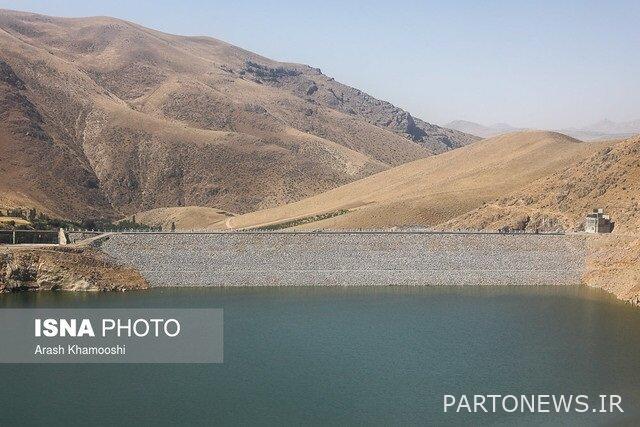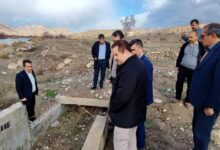Construction of the Finsk Dam contrary to the five principles of UNESCO?

During the process of ISNA news agency serials and reports, based on the challenges and dangers, as well as examining the strengths and weaknesses, threats and opportunities for the huge Finsk Dam project, in this section, we will take a look at the international rules for implementing such projects. ; Perhaps modeling foreign examples and analogies can more clearly present the challenges and cost-benefit analysis of the Finsk Dam construction project to the audience. The question is whether there are specific rules and frameworks for inter-basin water transfer and what is basically the approach and strategy of international organizations in similar situations?
The Finsk project, according to the news that is heard from time to time, seems to follow its steps and implementation process quietly and so-called with the lights off, and seeks to allocate maximum funds and start the dam project. As the water crisis siren sounds in the country, all managers and officials are looking for water in the areas under their management.
According to informed sources, the construction site of the dam is located at a distance of 70 km from Semnan city and in the geographical area of this city, and it is estimated that about 8 to 10 million cubic meters of sanitary and potable water required by Mehdi Shahr, Sorkheh and Semnan cities. To be provided from the construction site of this dam.
During the process of ISNA news agency serials and reports, based on the challenges and dangers, as well as examining the strengths and weaknesses, threats and opportunities for the huge Finsk Dam project, in this section, we will take a look at the international rules for implementing such projects. ; Perhaps modeling foreign examples and analogies can more clearly present the challenges and cost-benefit analysis of the Finsk Dam construction project to the audience. The question is whether there are specific rules and frameworks for inter-basin water transfer and what is basically the approach and strategy of international organizations in similar situations?
“Iran is a country whose topography, elevation and elevation of the watershed are so complex that they cross the hydrological, political and geographical boundaries. The construction of this dam in addition to” It is located on the geographical border in the hydrological area and the watershed of Tajan River.
In an interview with ISNA, Attaullah Kavian mentioned the vastness of the country’s watersheds, which include several provinces, and added: “This happened on the border of Semnan and Mazandaran, and as a result, it is not possible to rely solely on the location of a water source in Geographical point of a province Let’s say that these water resources belong to that geographical area and should be transferred to that area.
Emphasizing that the incompatibility of hydrological boundaries and geographical boundaries is natural, Kavian said: “How to deal with the intersection of these boundaries reveals the art of managing watersheds or catchments, for example the Danube from several countries in Europe.” It passes, but each of these countries can not benefit completely and independently from water resources (Danube River) because the integrated management of water resources is important here.
He redefined integrated water resources management: “The hydrological area or a catchment area should be considered on a large scale, meaning that the available water resources within that area are estimated and its models are drawn and the water needs of the areas are determined.” That area, implement integrated water resources management.
The faculty member of Sari University of Agricultural Sciences and Natural Resources referred to the concept of “inter-basin water transfer” and stressed that this concept is an outdated trend in many countries of the world and is considered a red line, adding: UNESCO as a Regarding the implementation of such projects, the World Authority has explained and defined 5 consecutive principles and conditions and says that the transfer of water between basins, if all the conditions are met step by step, only for the use of drinking water and With special considerations it can be transferred and licensed.
Kavian clarified according to the conditions set by UNESCO: steps one to four of the principles of UNESCO regarding the Finsk dam project are questionable, from a scientific point of view, no one can say with certainty that the transfer of water from the tributaries of Mazandaran province (up to Tajan, to Haraz and Talar and even two thousand and three thousand Tonekabon) what consequences and damages can be caused to the water, soil and ecosystem resources of Mazandaran or on the other hand it can not be stated with certainty whether this transfer is a great benefit and approach Will follow for Semnan.
He even considered the implementation of this plan contrary to the first criterion of UNESCO and emphasized: the first step of the principles of UNESCO has considered the destination basin; Because the first criterion states that the destination basin, if there is water management and use of all available water resources and provide all reasonable solutions to reduce consumption that can be predicted, if there is still a serious shortage in meeting the anticipated needs then The next step can be implemented, while in Semnan province, if water consumption is managed, savings are given with the necessary training and extension, and the pattern of cultivation and exploitation in agricultural lands changes, there will never be a need for water.
Professor of the Watershed Management Department of Sari University of Agricultural Sciences and Natural Resources, criticizing the production of dehydration products such as melons, greens and watermelons in Semnan province, stated: One kilogram of watermelon consumes about 500 liters of water, so why a large part of Semnan agricultural lands The production of watermelon, rye and melon, which are high-consumption products in terms of water, should be allocated, so it is necessary to change the consumption, cultivation and productivity patterns in this province in order to achieve savings.
Kavian reported the inconsistency of cultivation and productivity patterns with the critical situation in Semnan province and pointed out: high-consumption water products that are produced in Semnan, even in Mazandaran, their cultivation is prohibited for this reason, while a concept called “compatibility” In the international arena, this means that all countries must define guidelines for adapting to water scarcity, drought, climate change, and the effects of human intervention on the environment.
He pointed to the explained guidelines of developed countries to adapt to drought and water shortages and even natural and environmental hazards: If we pay attention to the first step of UNESCO, which is water management and water consumption, the criteria are not met. So that water productivity in Semnan lands is very low and about 35%, the remaining surface water is converted into wastewater and more than 90% evaporates and only leads to land salinity.
A faculty member of Sari University of Agricultural Sciences and Natural Resources stated: Whenever and wherever water is available, words such as water saving and management are discarded because the increase in water availability has caused concern about certainty and low crisis. Ignore blue.
Kavian further referred to the second step of the UNESCO conditions and said: “In the second step, the view of the source basin is considered in such a way that the source basin should not be limited in providing its required water resources, both now and in the future.” While many villages downstream of the Finsk Dam and upstream of Kiasar are now supplied with water by tanker in the summer, even in the last four years, the cities of Sari and Miandrood have faced severe droughts that have caused paddy to dry up and fall.
He said that the water needs of Mazandaran must be met so that water can be exported, adding: “In addition, Mazandaran will become a tourism and agricultural hub in the coming horizons, whose water needs must be taken into account, but water resources management has not been done yet. The source water resources must first be provided and then water must be exported, which not only the first step but also the second step has not been achieved.
This researcher, researcher and professor of all universities in the field of watershed management points to the environmental consequences of projects as the third step of the five principles of UNESCO and states that the implementation of inter-basin water transfer projects can have many destructive consequences and effects on aquatic and terrestrial ecosystems. “Every project should have an environmental studies appendix, but there is a complete lack of serious and scientific studies in the implementation of projects, which can eventually lead to water loss and even salinization,” he said. Water resources in the destination area also lead.
Kavian described the fourth step of the UNESCO principles as the economic and social implications of the implementation of the projects: All of these can not be approved and accepted until the clauses are examined step by step, so in the implementation of this The project should not be done in the first environmental study because this stage is in the third step, so it is necessary to do the first and second steps and then move on to the environmental issue.
He described the fifth step as examining all the benefits obtained from the transfer and then the equal distribution of these benefits between the source and destination basins, and reminded that this step will be examined after the first four steps, adding: Semnan and Mazandaran provinces are not discussed at all. This is a scientific opinion that should be considered in the geography of Iran.
The faculty member of Sari University of Agricultural Sciences and Natural Resources mentioned the current issue, in addition to what has been said, the future prospects and plans of Semnan province and said: Semnan’s 25-year development horizons reveal huge water needs that in no way It is not consistent with the available resources and has not been predicted for it, so it is necessary to manage its water resources, but this management is not only the transfer of water from another basin, but also requires scientific concepts such as watershed management, watershed management, aquifer management. , Artificial feeding of aquifers and catchments with ecological attachments should be given serious attention.
Kavian called Iran one of the leading countries in the discussion of artificial feeding of aquifers and noted: In an article presented by Dr. Kowsar in this regard, it has been proven that artificial feeding of aquifers is more valuable than oil exports to Iran. The climate of the country and land areas such as Semnan; Why in Semnan (a province where 90% of surface water evaporates) should the annual rainfall be completely turned into wastewater and eventually evaporate and no management be done; This is where water conservation projects come into play.
Expressing that indigenous knowledge has been neglected in Semnan, he called this province one of the leading provinces in the discussion of aqueducts and the use of groundwater resources and its management and emphasized: Iran is one of the countries that invented aqueducts and this method of water resources engineering and management It is in the world and Semnan has a very long iodine aqueduct in terms of construction, but many aqueducts in this province are dry and unusable.
Kavian referred to the statements of some sources and individuals regarding the presentation of proposals and alternative ways to transfer water to Semnan (including the cancellation of the construction of the Finsk dam) and said: There is no alternative because when it comes to inter-basin water transfer This means that the water is to be transferred from one watershed to another. This is a direct example of the definition of Inter-Basin Water Transfer, IBWT, which, when it is understood, should immediately consider the 5 UNESCO World Standards and pass these steps step by step. And confirmed and entered the next step.
He described the proposals such as transferring water behind Shahid Rajaee Dam to Semnan province by piping as a worse excuse than guilt and added: “Ecological, environmental and economic damages and dangers and socio-political tensions following this action are even more than The transfer will be the Finsk Dam. It should be noted that presenting any proposal that is without study and far from principled and scientific steps will only complicate the situation and in the long run its adverse effects will be innumerable and tolerable.
Professor of Watershed Management Research Group, Faculty of Natural Resources, Sari University of Agricultural Sciences, announced the final cost of construction of this project, taking into account the annual inflation and erosion of the construction process and time consuming, 2 to 3 times the initial and cost estimates. One of the prominent features of such projects in the country is the lack of transparency and free access to useful information and data to researchers and journalists, which is their right, because in other countries, information is available to everyone on reputable websites.
In the end, Kavian suggested: part of the construction costs of the dam can be spent on educational and extension work to increase culture and adaptation of the people of Semnan to water shortages, another part to spend on improving and repairing the destination water distribution network and part to study and increase knowledge Indigenous, aquifer, watershed management and water resources management should be available, because in this case, much better results will certainly be achieved.

